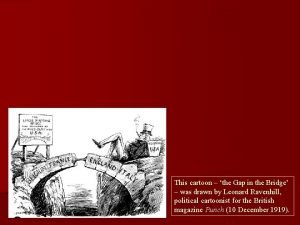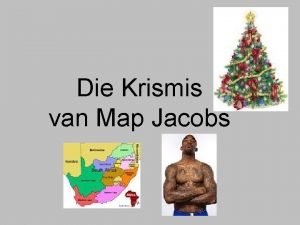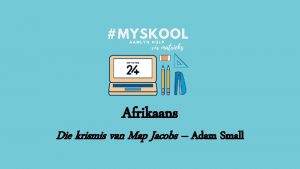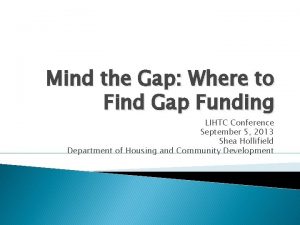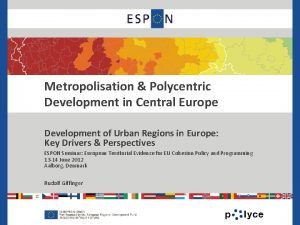Mind the gap the integration of polycentric models










- Slides: 10

Mind the gap: the integration of polycentric models of governance in the local English VET system -theoretical argument. Carmen Nicoara Ph. D Student King’s College London

Theoretical argument: 1. The problem: free-riding problem of training 2. The speculative solution: polycentric model of governance (polycentric = multiple independent centers of governance) 3. The speculative solution in practice: the role of Local Enterprise Partnerships (LEPs) in addressing the free-riding problem

Apprenticeship – theoretical framework Apprenticeship Part-time formal education Generic training …in professional communication skills Training and experience in the training firm’s workplace Transferable training …in building, repairing and operating a 3 D printer Specific training …in operating a specific model of 3 D printer, for a specific production process Useful to many firms Useful to some but not many firms Useful to very few firms high external value relatively high external value low external value (Becker, 1962; Stevens,

Training as a collective good • Presence of external value = non-excludable = collective good • Cost-benefit analysis of investment in human capital with external value, under imperfect competition: Firm A: Cost position Production-of-benefits position Benefits Firm B: No-cost position (Olson, 1965)

The collective action problem of training • The action of investing in transferable training leads to a collective action problem (CAP) for employers (Sandler, 2015) • CAP of training = ‘the free-rider problem’, which assumes firms’ preference to achieve firm-specific outcomes without necessarily paying for it CAP of training -> Sub-optimal investment in training: 1) ‘too few workers will be trained’ (Lewis, 2014: 13) 2) training will be restrictive, producing ‘narrow experts’ with firm-specific skills (Fuller & Unwin, 2003: 47)

Theoretical framework for the proposed solution to the free-riding problem • Ostrom’s polycentric model of governance: - multiple centres of decision-making (independent, overlapping and with duplicating functions) - which act as a coherent system under a general system of rules - which interact with each other through cooperation, competition, and/or conflict resolution (V. Ostrom et al. , 1961: 831)

Proposed solution (cont. ) • This model of governance can lead to: - polycentric systems of incentives - polycentric system of feedback and of preference-sharing mechanisms • Empirical question: How can the localism agenda affect the capacity of the apprenticeship system to produce the relevant well-rounded experts needed in different industries?

UK Government Apprenticeship Levy LEPs Non-levy-paying employers (NLPs) Levy-paying employers (LPs) Training providers Apprentices Addressing local skills shortages through 3 million skilled workers, polycentric system of incentives, of of which 2 million are Level 2 feedback mechanisms and preferencebusiness administrators sharing mechanisms Hypothetically: Skilled workforce Top-down target: 3 million Locally-agreed targets that new by 2020 makeapprenticeships up a national total.

Summary of theoretical argument: 1. The problem: free-riding problem of training 2. The speculative solution: polycentric model of governance (polycentric = multiple independent centers of governance) 3. The speculative solution in practice: the role of Local Enterprise Partnerships (LEPs) in addressing the free-riding problem

References • Becker, G. S. (1962). Investment in Human Capital: A Theoretical Analysis. Journal of Political Economy 5 (2): 9 -49; • Fuller, A. & Unwin, L. (2003). Learning as Apprentices in the Contemporary UK Workplace: creating and managing expansive and restrictive participation. Journal of Education and Work, 16: 4, 407 -426; • Lewis, P. A. (2014). The Simple Economics of Apprenticeships. London: Gatsby Charitable Foundation; • Olson, M. Jr. (1965). The Logic of Collective Action: Public Goods and the Theory of Groups. Cambridge, MA. : Harvard University Press; • Ostrom, V. , Tiebout, C. , & Warren, R. (1961). The Organization of Government in Metropolitan Areas: A Theoretical Inquiry. The American Political Science Review, 55(4), 831 -842; • Sandler, T. (2015). Collective action: fifty years later. Public Choice, 164(3 -4), pp. 195 -216; • Stevens, M. (1993). Some issues in the economics of training. Ph. D Thesis, Oxford.
 Qo'shma gap qismlari
Qo'shma gap qismlari Compiler bridges the semantic gap between which domains?
Compiler bridges the semantic gap between which domains? Gap in the bridge
Gap in the bridge Krismis van map jacobs vrae en antwoorde
Krismis van map jacobs vrae en antwoorde Krismis van map jacobs
Krismis van map jacobs What is the difference between models and semi modals
What is the difference between models and semi modals Mind map model
Mind map model Three dimensions of corporate strategy
Three dimensions of corporate strategy Forward and backward integration
Forward and backward integration Simultaneous integration examples
Simultaneous integration examples Mindmaster software
Mindmaster software


